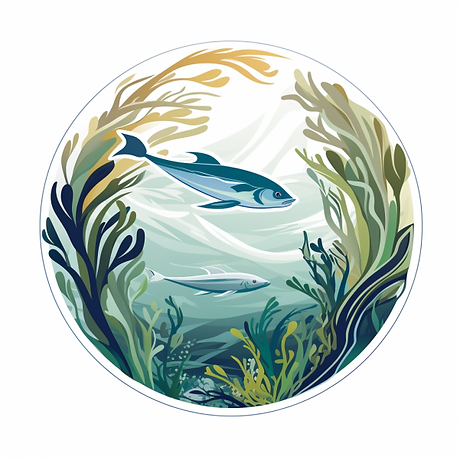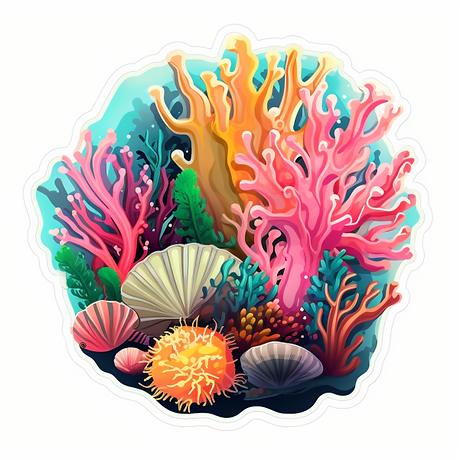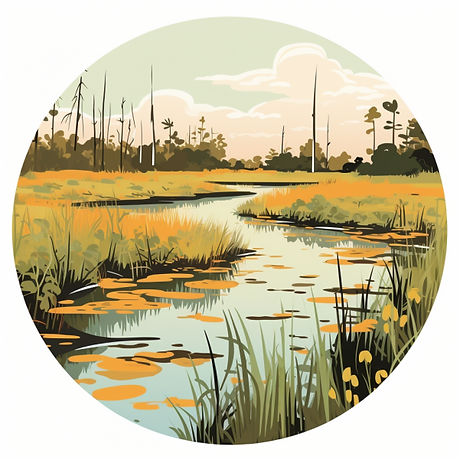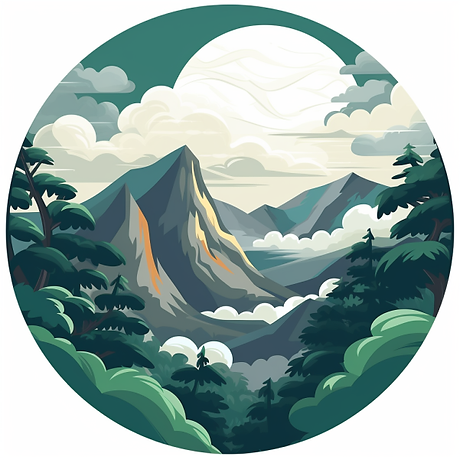OUR ECOSYSTEMS
From the Waters to the Lands and the Mountains
There are many at-risk environments worldwide that need desperate attention to prevent further degradation. Many are familiar with the bleaching of the coral reefs, or the wildfires and deforestation that ravage the amazon. However, there is a diverse range of ecosystems that need more attention than they are being given. Here are some that GEF commits to helping raise awareness for, and protect.
KELP FORESTS
Kelp forests are underwater areas with a high density of kelp which covers about 25% of the world's coastlines. They are recognized as one of the most productive and dynamic ecosystems on Earth. Smaller areas of anchored kelp are called kelp beds.
However, the influence of humans has often contributed to kelp forest degradation. Of particular concern are the effects of overfishing nearshore ecosystems, which can release herbivores from their normal population regulation and result in the overgrazing of kelp and other algae. This can rapidly result in transitions to barren landscapes where relatively few species persist. The implementation of marine protected areas is one management strategy useful for addressing such issues, since it may limit the impacts of fishing and buffer the ecosystem from additive effects of other

CORAL TRIANGLE
The Coral Triangle is a roughly triangular area of the tropical marine waters of Indonesia, Malaysia, Papua, New Guinea, Philippines, Solomon Islands and Timor-Leste that contain at least 500 species of reef-building corals in each ecoregion. This region encompasses portions of two biogeographical regions: the Indonesian-Philippines Region, and the Far Southwestern Pacific Region. The Coral Triangle is recognized as the global center of marine biodiversity and a global priority for conservation.
While only covering 1.6% of the planet’s oceanic area, the region has 76% of all known coral species in the world. As a habitat for 52% of Indo-Pacific reef fishes and 37% of the world's reef fishes, it encompasses the highest diversity of coral reef fishes in the world. More than 3,000 species of fish live in the Coral Triangle, including the largest fish - the whale shark and the coelacanth. The Coral Triangle is the epicenter for the biodiversity of not only corals and fish, but many other marine organisms as well. It also provides habitat o six out of the world's seven marine turtle species.

WETLANDS
The term 'wetlands' encompasses a vast range of water-based areas including swamps, marshes, billabongs, lakes, salt marshes, mudflats, mangroves, coral reefs, fens, and peatlands. Wetlands are an important part of the Australian landscape.
They act as filters for our waterways, breeding sites for hundreds of Australian animals and recreational centers for many communities. They protect our shores from wave action, reduce the impacts of floods, absorb pollutants and improve water quality.
According to the report, nearly 90 per cent of wetlands in the Basin have disappeared since Australia signed up to Ramsar, while the remainder are in poor or critical condition, including some Ramsar sites. This is believed to be one of the leading contributors to the massive wildfires seen as of late.

CLOUD FOREST
Only 1% of the global woodland consists of cloud forests. It was previously estimated to be 11% of all tropical forests in the 1970s. A total of around 736 cloud forest sites have been identified in 59 countries by the World Conservation Monitoring Centre, with 327 of them being legally protected areas as of 2002.
The 1990 Global Forest Survey found that 1.1% of tropical mountain and highland forests were lost each year, which was higher than in any other tropical forests. In Colombia, one of the countries with the largest area of cloud forests, only 10–20% of the initial cloud forest cover remains. In Peru, more than one-third of the 270 endemic birds, mammals, and frogs are found in cloud forests. One of the best-known cloud forest mammals is the mountain gorilla.

TROPICAL RAINFORESTS
The Amazon rainforest, also known in English as Amazonia or the Amazon Jungle, is a moist broadleaf tropical rainforest in the Amazon biome that covers most of the Amazon basin of South America. This basin encompasses 7,000,000 km2 (2,700,000 sq mi), of which 5,500,000 km2 (2,100,000 sq mi) are covered by the rainforest. This region includes territory belonging to nine nations.
There have been 72,843 fires in Brazil in 2019, with more than half within the Amazon region. In August 2019 there was a record number of fires. Deforestation in Brazillian Amazon rose more than 88% in June 2019 compared with the same month in 2018. Environmentalists are concerned about the loss of biodiversity that will result from the destruction of the forest, and also about the release of the carbon contained within the vegetation, which could accelerate global warming.


